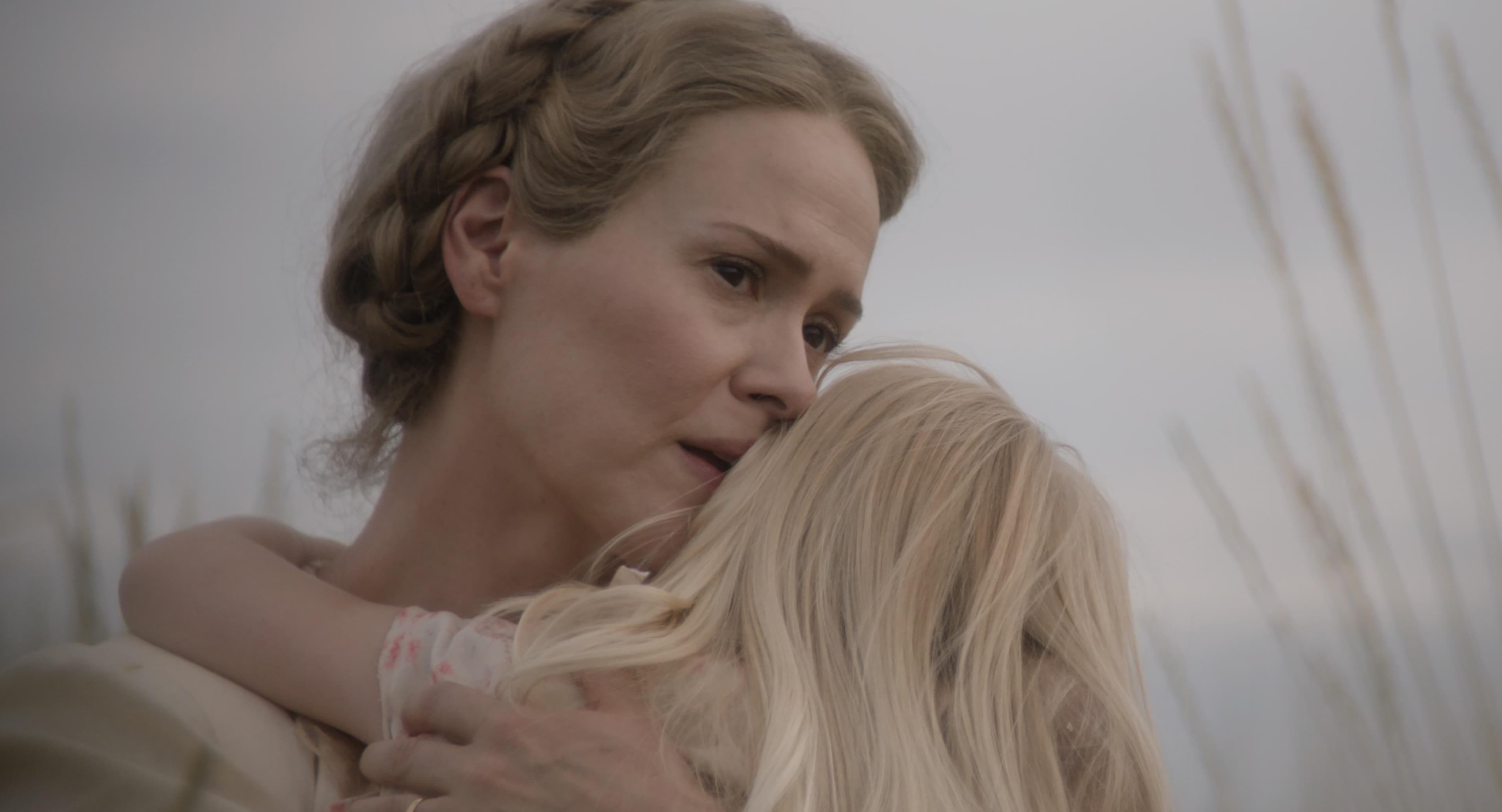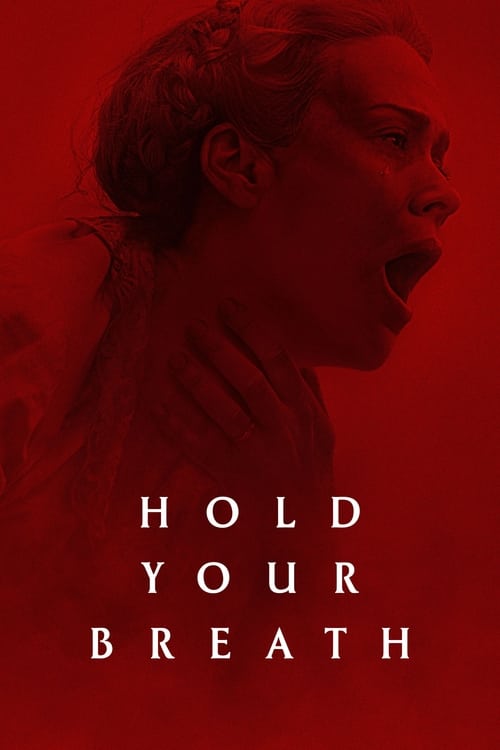Hold Your Breath – Film Review
Published October 7, 2024

Hold Your Breath, directed by Karrie Crouse and Will Joines, is a psychological horror-thriller set in the harsh, isolated landscape of 1930s Oklahoma. With dust storms that threaten to swallow the world whole, the film explores themes of motherhood, trauma, and supernatural fear. It stars Sarah Paulson as Margaret Bellum, a woman haunted by her past, with Amiah Miller playing her daughter Rose, and Annaleigh Ashford, Alona Jane Robbins, and Ebon Moss-Bachrach rounding out the cast. While the film’s premise and mood are intriguing, Hold Your Breath ultimately falters due to pacing issues and underdeveloped characters.
Hold Your Breath excels in crafting a distinct atmosphere. The film’s cinematography captures the barren, desolate plains of Oklahoma in the 1930s, where dust storms—known as “black blizzards”—choke the sky and obscure the horizon. The storm sequences, in particular, are visually arresting, with the filmmakers using a muted color palette of browns and grays to emphasize the bleakness of the environment. This oppressive landscape becomes a character in itself, representing both the external and internal suffocation that the protagonist, Margaret, experiences.
The dust storms are the primary vehicle for the supernatural element of the film. As Margaret grows increasingly paranoid about a mysterious presence in the storms, the visuals support this dread. Director of photography, Zoë White, uses swirling dust and half-glimpsed figures to heighten tension, suggesting that the unknown is lurking just beyond the viewer’s sightline. This visual ambiguity creates an eerie and disorienting feeling, contributing to the film’s psychological horror.
Sarah Paulson, known for her ability to portray emotionally complex characters, delivers a strong performance as Margaret Bellum. Margaret is a woman struggling to protect her two daughters while dealing with the psychological scars of her past. Paulson imbues her with a vulnerability that makes her character’s descent into paranoia both believable and empathetic. There is a subtlety to her performance that helps ground the film, even when the supernatural elements begin to feel overly ambiguous. The haunted look in her eyes and her strained physicality give the audience a window into her crumbling mental state.
Margaret’s desperation to shield her children from harm, both physical and supernatural, drives much of the emotional weight of the story. Paulson’s portrayal ensures that the audience remains invested in her plight, even as the film’s narrative becomes increasingly opaque.
Amiah Miller as Rose, Margaret’s eldest daughter, delivers a solid performance but is given limited material to work with. Rose’s relationship with her mother is fraught with tension, particularly as Margaret’s paranoia deepens. However, the film never fully explores this dynamic, which feels like a missed opportunity. There are hints of Rose’s fear of becoming like her mother, but these moments are too fleeting to leave a lasting impact.
Annaleigh Ashford as Esther Smith, a neighbor who offers temporary solace, brings some warmth to the film. However, her character is underdeveloped and ultimately serves more as a plot device than a fully fleshed-out individual. Alona Jane Robbins, as the younger daughter Ollie, plays a more passive role but provides the film with moments of innocence that contrast the growing darkness around the family.
Ebon Moss-Bachrach plays Wallace Grady, a drifter whose arrival adds a layer of ambiguity to the narrative. Is he a helpful presence or another threat? Unfortunately, like much of the supporting cast, his character is more of a cipher than a fully realized individual. This lack of depth in the supporting roles detracts from the film’s emotional resonance and weakens its overall impact.
The film’s central theme revolves around fear of the unknown—both in the physical manifestation of the dust storms and in Margaret’s mental unraveling. The storms become a metaphor for her internal turmoil, with the line between reality and delusion becoming increasingly blurred. Margaret is haunted by a tragic past that is only vaguely alluded to, leaving much of her trauma to the audience’s imagination.
However, the film’s reluctance to provide more concrete answers works against it. While ambiguity can be an effective tool in psychological horror, Hold Your Breath leans too heavily on it, to the point where the narrative begins to feel muddled. The supernatural presence in the storms is never fully explained, and the film’s refusal to offer any clarity may leave viewers frustrated rather than intrigued.
The pacing of the film also contributes to its shortcomings. At just under two hours, *Hold Your Breath* feels longer than it is due to its sluggish middle act. The slow build of tension, while effective in the beginning, eventually becomes monotonous. The film teeters on the edge of suspense but never fully delivers the payoff that its setup promises.
One of the film’s biggest weaknesses is its missed opportunities to delve deeper into its characters’ emotional lives. Margaret’s past trauma is hinted at but never explored in a meaningful way, which robs the story of a crucial layer of psychological complexity. The relationship between Margaret and Rose, which could have provided rich emotional conflict, remains largely superficial.
Moreover, the film’s exploration of motherhood as a source of both strength and vulnerability feels undercooked. While Margaret’s desperation to protect her children is a driving force, we never fully understand the depth of her love or fear. This lack of emotional depth prevents the film from resonating on a more profound level, which is particularly disappointing given the talent of its lead actors.
Hold Your Breath is a film that succeeds in creating an unsettling atmosphere but ultimately falls short in terms of narrative and character development. The dust storms, as a visual metaphor for Margaret’s internal fears, are effective, and Sarah Paulson delivers a compelling performance as a mother on the edge. However, the film’s slow pacing, underdeveloped supporting characters, and refusal to provide narrative clarity detract from its overall impact.
While fans of atmospheric horror may appreciate the film’s mood and visual style, Hold Your Breath struggles to maintain momentum and emotional engagement. It’s a film that feels like it’s constantly on the verge of something greater but never quite gets there.
